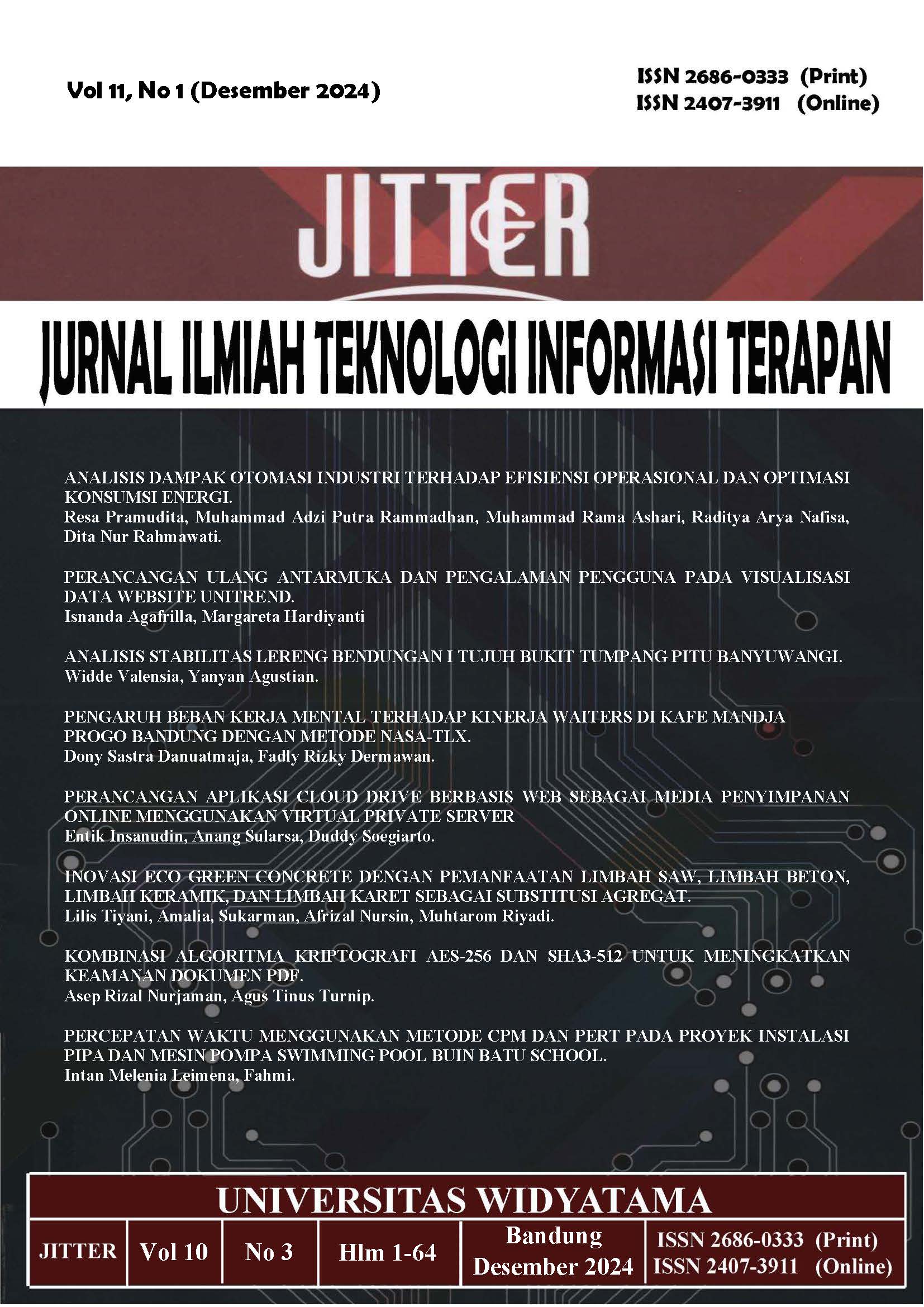REDESIGN OF USER INTERFACE AND USER EXPERIENCE IN DATA VISUALIZATION ON THE UNITREND WEBSITE
DOI:
https://doi.org/10.33197/jitter.vol11.iss1.2024.2369Keywords:
data visualization, data-ink ratio, gestalt principles, low-level task, mecue questionnaireAbstract
The advancement of industry and technology has created opportunities for businesses to turn data into valuable assets that drive growth. Data visualization serves as an effective solution to transform complex data into easily understandable information, thereby accelerating business processes and improving decision-making. The Institute for Policy Development (Poldev) at UGM developed UniTrend, a website that provides real-time public sector data to address the limitations of data access from the government. However, UniTrend's data presentation has yet to consider user-friendliness in reading graphs. This final project aims to address this issue by improving the quality of data visualization in terms of effectiveness and user experience. The resulting design is based on the principles of data-ink ratio and Gestalt principles. A total of nine visualizations from three different designs were tested through low-level tasks and the meCUE questionnaire. The test results showed that data-ink ratio design excelled in three aspects: usefulness by 75%, usability by 67%, overall evaluation by 63%, accuracy by 63%, and preference by 56%. Based on these results, data-ink ratio design demonstrated better overall performance compared to Gestalt principles design. Overall, the application of data-ink ratio and Gestalt principles successfully improved the effectiveness and user satisfaction in accessing information on UniTrend's website data visualizations
Downloads
Downloads
Published
How to Cite
Issue
Section
License
Copyright (c) 2024 Isnanda Agafrilla, Margareta Hardiyanti

This work is licensed under a Creative Commons Attribution-NonCommercial-ShareAlike 4.0 International License.
Submission of a manuscript implies that the submitted work has not been published before (except as part of a thesis or report, or abstract); that it is not under consideration for publication elsewhere; that its publication has been approved by all co-authors. If and when the manuscript is accepted for publication, the author(s) still hold the copyright and retain publishing rights without restrictions. Authors or others are allowed to multiply the article as long as not for commercial purposes. For the new invention, authors are suggested to manage its patent before published. The license type is CC-BY-SA 4.0.




.png)
.png)













.png)


